Water pumps have a wide range of applications in aquariums. Whether they are used for business or private purposes, they all use the same elements: mechanical and hydraulic principles. Despite their differences, all pumps move liquids. Some are manual, while others use an electric or gas motor. A manual pump is not recommended for home use. There are several different types are available and can be used for different purposes. If you have a problem with your pump, contact a local repair shop for assistance.
Content Table
Although an aquarium water pump is almost anywhere, for fish lovers, it is also very important in the fish tank.
The role of the water pump in the Fish Tank
Despite there are many advantages of water pumps, many people are confused as to what the importance of these devices is. First, the pump is a vital component of an aquarium. The movement of water is vital for the survival of many types of marine life. Without it, the corals may suffer from poor health. Moving water is also necessary for the removal of waste and gas exchange. Therefore, water pumps are an essential part of the aquarium setup.
The pump itself can be costly. There are many types of water pumps available on the market. You can find an affordable and reliable model at a local retail store or aquarium online shop. When choosing a pump, make sure to consider several factors. First, consider the power. Your pump should be able to handle the amount of water your tank requires. Secondly, consider the cost performance of the pump. You should choose the highest quality possible, and the water filter should be quiet, have a long lifespan, and be free of rust or corrosion.
A water pump can be a very useful part of an aquarium. Most types of marine aquariums feature a high-quality filter. It ensures that water is constantly filtered. A filter will also increase the number of live corals that will thrive in your tank. However, there are also many advantages of installing a pump. A high-quality pump is a must-have for any reef tank.
How does a water pump work in an aquarium
The most common water pump used in aquariums is the centrifugal pump. This is powered by an electrical motor that rotates the impeller, or vane assembly, within the main housing. The impeller and the motor are separated by an airtight gasket. This helps to keep the motor and the impeller dry, and the water inside the tank clean. The pump’s impeller and vane assembly are attached by a magnet. The vane assembly is positioned within the impeller shaft, which is located inside the main housing, also known as the volute.
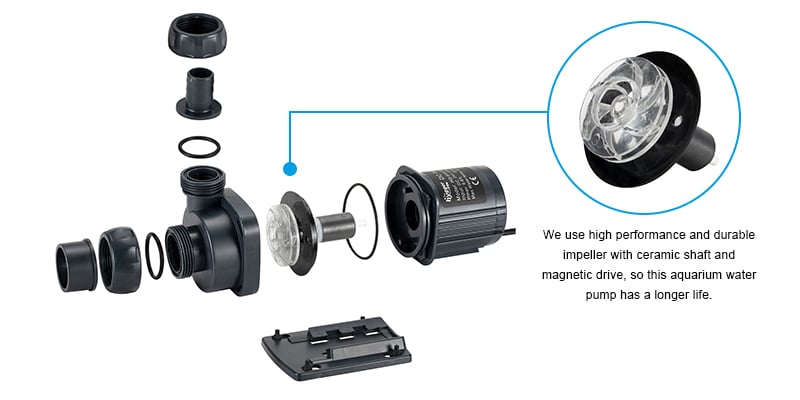
Water pumps in aquariums function by moving water through an enclosed powerhead. There are two types of pumps: the free-flow and the pressure setup. The free-flow one creates pressure in the water as it spins, which is then transferred to the impeller. Pump pressure created in the head of the pump is then forced out through the filter, and at the end of the head locates the discharge outlet. The pressure setup places the pump after the canister filtration system. In this setup, the pump is a simple one. It works by directing pressurized water through a media reactor.
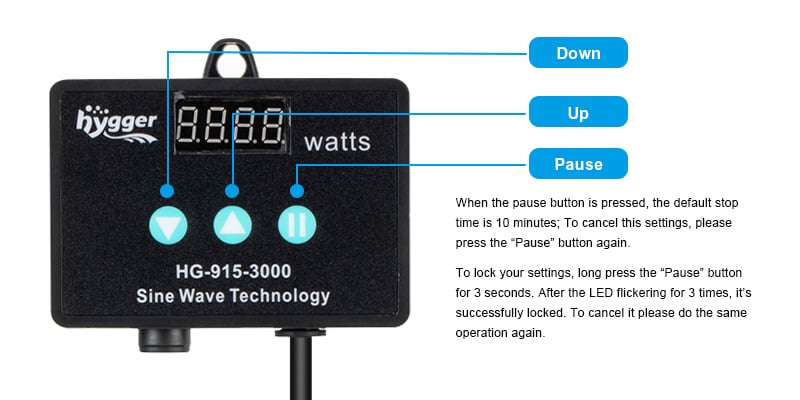
A positive displacement pump is used in more complex aquarium systems. It has diaphragm and peristaltic designs. They work by mimicking the human heart. A connecting rod connects to the diaphragm and moves the diaphragm to pump water. The motor/gear system uses this same principle to keep the water flowing in the aquarium.
For example, DC Water Pump is designed for external or internal use and is completely submersible. Before you plug the pump into the outlet, it must be fully submerged in water. This pump is equipped with o rings and screw nuts to connect to pipe connections. Its water float is designed for continuous use and comes with an extra set of glue and two removable water intake screens. Its lowest level of water is 0.8 inches, which makes it ideal for pools and spas.
Tips about setting water pump in your fish tank
The first thing you need to consider when setting up your water pump is the placement. The return to tank should be placed near the surface, but not too close. In some cases, it can extend to the bottom of the fish aquarium, creating a siphon. If this happens, the water in the tank will drain into the sump. This may completely drain the entire tank, so you must make sure that the pump is in a location where it cannot be seen.
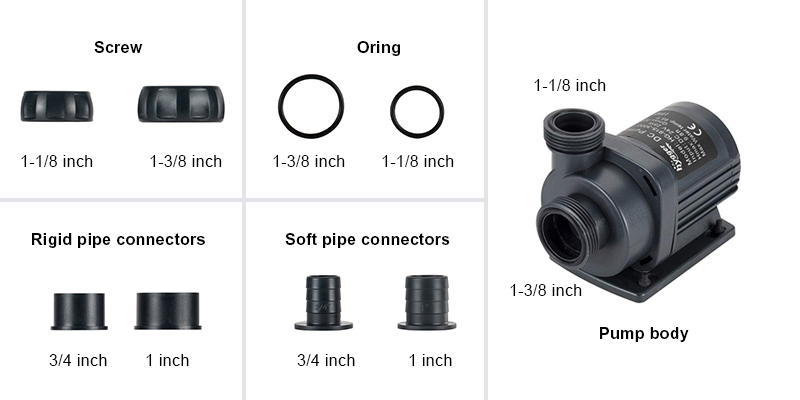
The internal circulation pump should be set to cycle, so you don’t accidentally suck in a smaller fish. In a larger tank, the impeller can suck in small fish, but a removable water intake screen can prevent fish from sucking. This is good for some invertebrates and corals, so you do not worry about protecting the pump’s inlet. If your pump isn’t cycling, clean the impeller regularly and replace any damaged parts.
The water pump in your fish tank should be cleaned at least once a month. You can easily clean it by unscrewing the union. And should also be sure to close the valves and clean the inside of the pump with a toothbrush. Pay attention to the small parts inside, because these can be clogged with debris. If the pump is close to the sand, you need to ensure that the pump isn’t touching it.
How to tell if the water pump is pumping
A fish tank’s water pump is an important part of the aquarium. It forces the water out through a filter and back in again, can either be integral or external. The former pumps the water from the tank to the filter and back again, while the latter uses a pump to force the filtered air out. There are differences between the two, however. While the integral pump will remove contaminants by pushing them through a filter, an external pump will force the water out of the aquarium by forcing it through an external device.
Generally, aquarium water pumps are powered by an electric motor. The impeller is pushed through the water at a high speed, which creates a low-pressure area. Water enters the pump through an input check valve, and the diaphragm moves in a direction only limited by the check valve. When the diaphragm reaches its limit, it reverses direction and collapses the chamber. The water in the chamber is pushed out through the second check valve outlet. This mechanism is not continuous and delivers its contents in pulses.
What are the bad water pump symptoms?
One of the most common problems that a bad water pump can cause in a fish tank is overcrowding problem. If you see young fish sticking to the corners of the aquarium, you should check whether they are lethargic or sick.
The symptom that is associated with an oversized pump is a high-pitched whining sound. This is usually caused by a loose pulley or problems with the pump bearings. The latter can be a sign that your pump has reached the end of its useful life. If your fish tank is experiencing a smell of steam, your water pump may be overheating, which can lead to other problems, including engine overheating and water quality change.
Then you need to test your water, you should go to the store or use a test strip like one touch water test kits. If your levels are too high, your aquarium is too dirty or contains too much food. Try a 25 percent water change. If you notice the smell of ammonia, this means that you have an excess of waste in the water. If you see this odor, it is time to change your water pump. It is important to purchase a filter that’s rated for the size of the fish tank.
Pick the right small water pump for the aquarium
People who do not know how to pick the right pump for an aquarium can try the Hygger DC Water Pump. As an aquarium brand with a pursuit, Hygger has won many loyal buyers with its minimalist style, fine workmanship, and high-quality products.
It is one of the most advanced return pumps in the industry. Its dual water intake shells allow it to work in shallow water as small as 0.8 inches. The pump runs extremely quietly and automatically shuts off if there is no water. It is also easy to take apart, clean, and reassemble. There is also no need for a separate control panel, which makes it the best choice for a variety of applications.
It is easily installed and has a removable shell, which can be either externally run or submerged in water. While the controller is waterproof, it should be kept indoors. The controller needs to be located in a dry area because it cannot be plugged into the water. The whole pump must be placed at a lower level than the level of the water, which will prevent it from overheating the motor.
To use the water pump more convenient, here are some directions
1. Connect the power cord and the pump cord to the pump controller.
2. Turn on the pump by connecting to the power; Turn off the pump by unplugging the power.
3. The DC pump will stop working when the input voltage is too high, with no water or the impeller is blocked. To restart the pump, please re-plug the power.
4. If you find the pump has failed to pump water, please try to unplug and re-plug the power to get rid of the air inside the pump. Repeat the operation several times till the pump works normally.
As the saying goes, fish breeding starts with water breeding. For all fish lovers, it is very important to establish a good water quality environment for your fish, and then the necessity of a water pump is not mentioned. Now there are many kinds of aquaria water pumps on the market, and the function also varies, quickly choose a suitable pump for your home aquarium.
The best way to choose the right pump for your aquarium is to consult a flow chart. This flow chart tells you the actual flow rate of water. If you’re looking for a powerful pump for a small tank, you’ll want to choose one with a higher wattage. A low-flow pump will require an extra-powerful filter, while a high-flow pump will only require supplemental filtration.
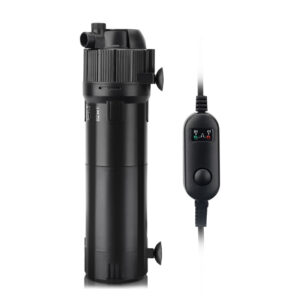
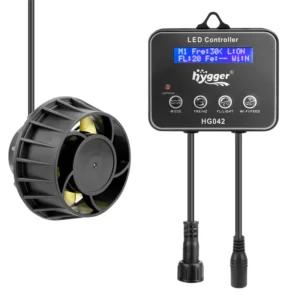
Leave a comment